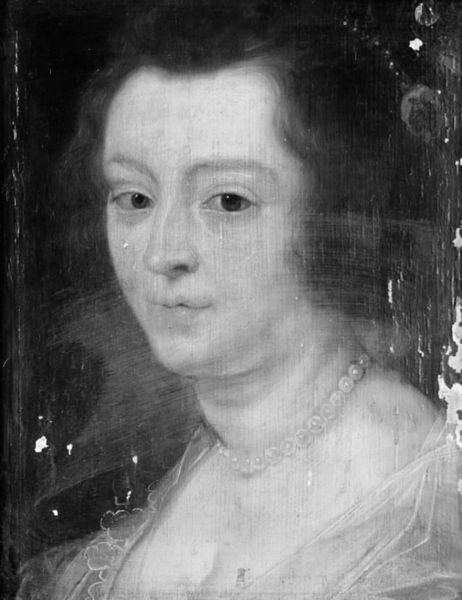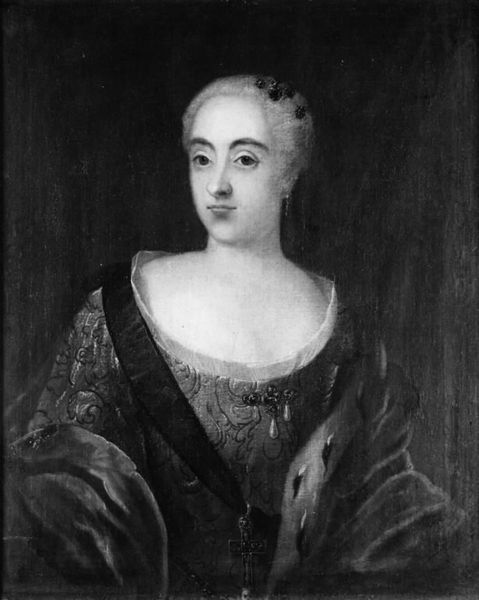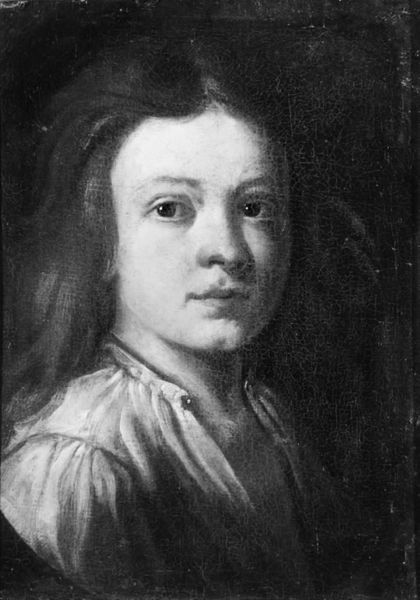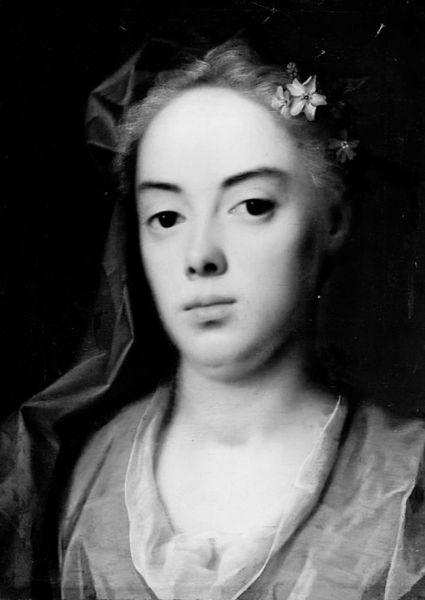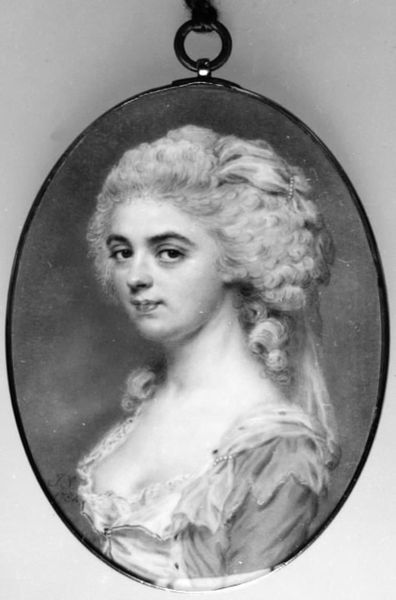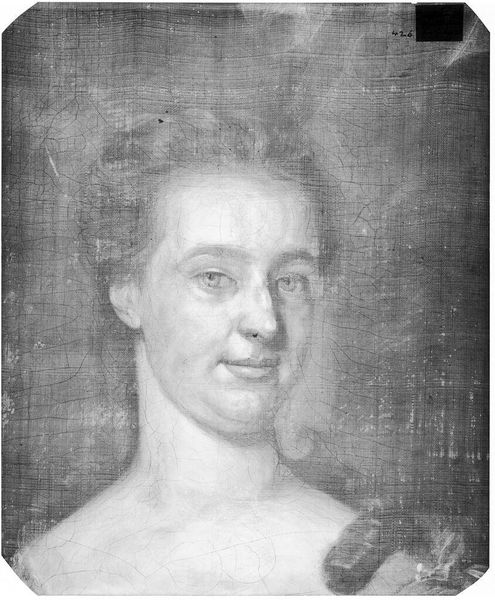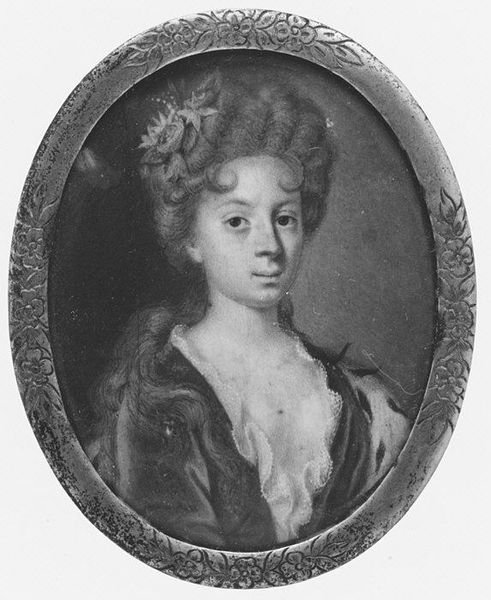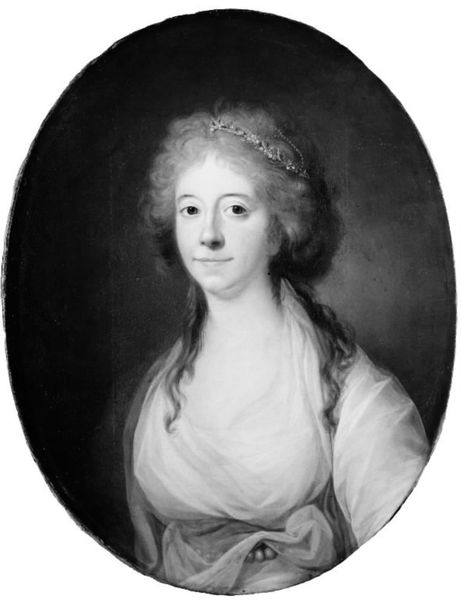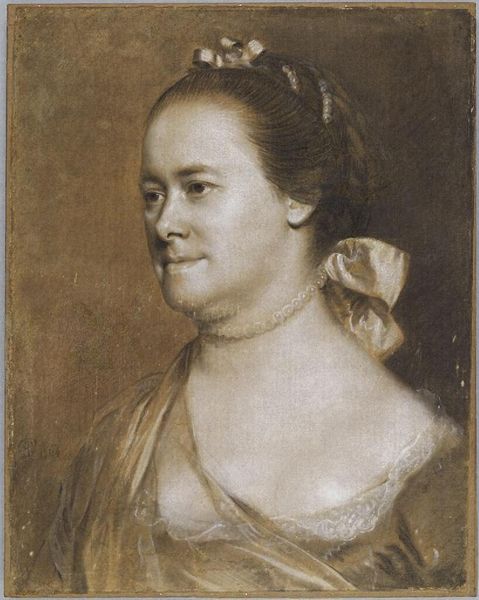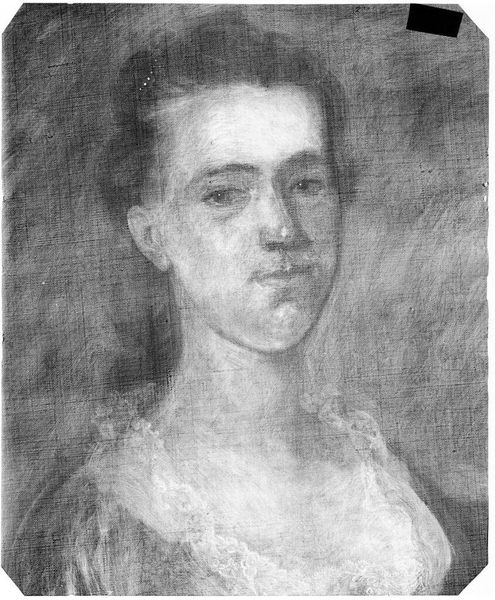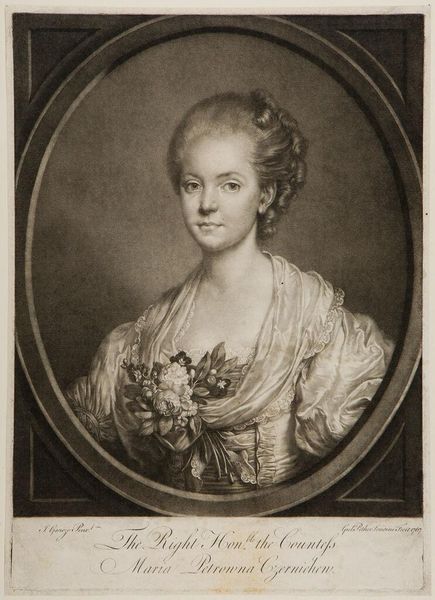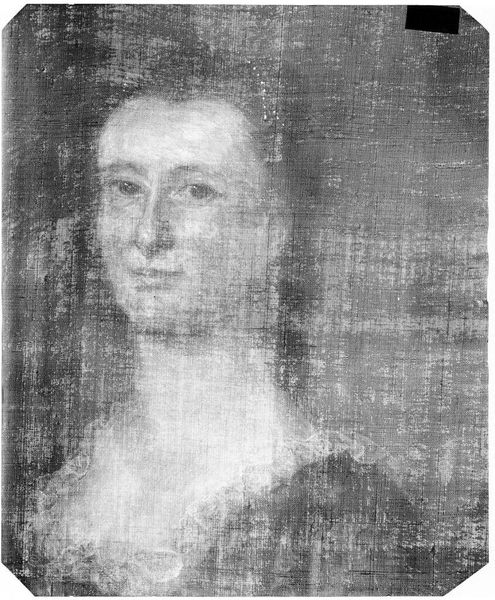
painting, oil-paint
#
portrait
#
self-portrait
#
portrait
#
painting
#
oil-paint
#
figuration
#
academic-art
#
realism
#
rococo
Dimensions: 16.5 cm (height) x 12.5 cm (width) (Netto)
Curator: Standing before us, we have Balthasar Denner’s “The Artist's Wife,” painted sometime between 1700 and 1749. It is currently held here at the SMK, Statens Museum for Kunst. Editor: The immediate impression is one of striking naturalism. There’s a subdued palette at play here, giving it a rather intimate feel. I'm drawn to the subtle modelling of her face and the rendering of the translucent veil. Curator: Absolutely. Denner was celebrated for his hyperrealistic style. Look at the palpable texture achieved through the application of oil paint—almost photographic in its detail, yet entirely crafted by hand. Considering the social context, how does this extreme verisimilitude influence your read? Editor: The very act of painstakingly rendering every pore and wisp of hair suggests an intense focus on the physical, the material reality of the sitter. The choice to present her so plainly, eschewing idealization, democratizes the image to a degree. But this level of detail demanded immense labor, suggesting wealth was somewhere in the work's patronage or even production. How much were artists paid at that time for their labor, and how long did this artwork take to be produced? Curator: You raise fascinating points about labor, which makes me see her almost as an allegory. The veil drapes so smoothly and frames her face so perfectly, creating a composition of elegant simplicity. It focuses attention squarely on the figure, almost as if everything around her, socially, has receded to allow her gaze to dominate the space. Editor: Yes, her gaze feels knowing, direct, maybe a little melancholy? It brings to my mind, again, the labor she herself would have had to provide to maintain her image and household. Curator: The lack of obvious artifice makes me view this portrait as being radically forthright for the time, given the pervasive artifice in much Rococo art. Its truth is embedded not merely on the superficial realism of it, but in its conceptual underpinning. The structure gives her presence such strength! Editor: This exploration, through the interplay of representation and fabrication, unveils art's persistent dialectic within its socioeconomic moment. The detail isn't just about virtuosity; it also speaks volumes about value, both economic and aesthetic. Curator: Reflecting on the painting, it’s a potent intersection between artistic form and the nuances of lived experience in the 18th century. Editor: Yes, seeing this through the lens of labor and the lived experience truly contextualizes how the materiality underscores its overall artistic resonance.
Comments
No comments
Be the first to comment and join the conversation on the ultimate creative platform.
